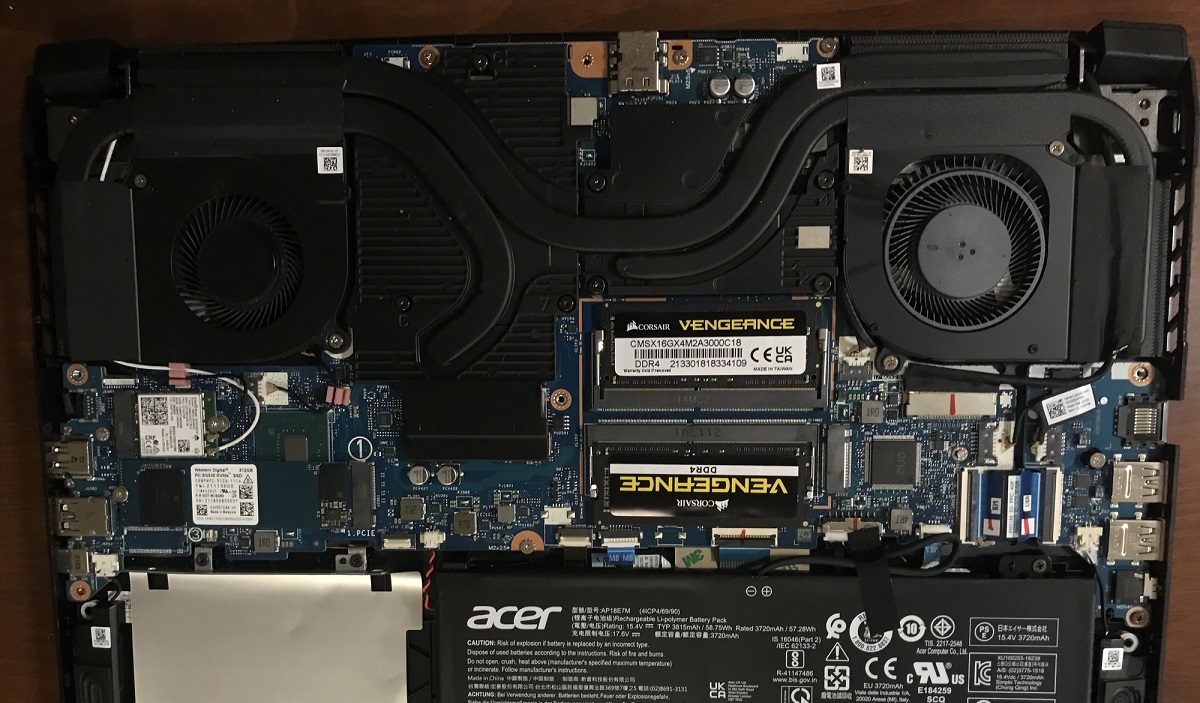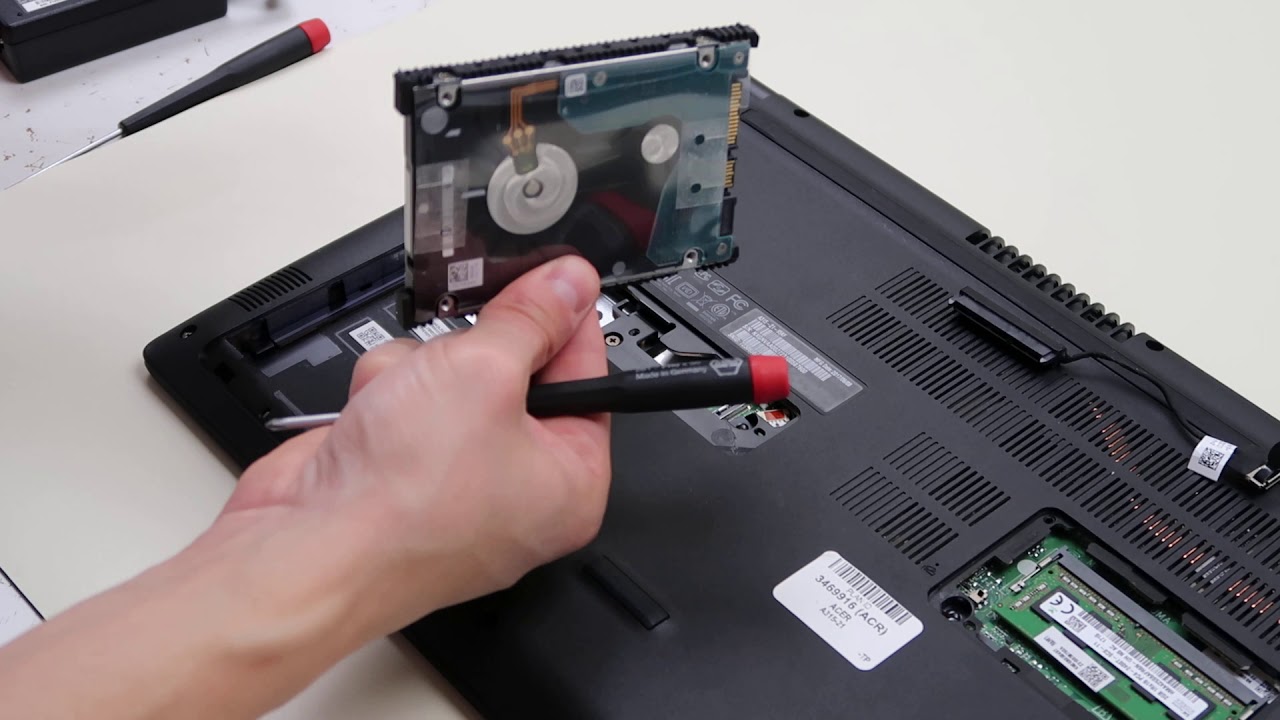Introduction
When it comes to optimizing the performance of a solid-state drive (SSD) in your Acer laptop or desktop, there are several techniques you can implement to enhance speed and efficiency. As SSDs use flash memory rather than traditional mechanical spinning disks, they offer improved reliability and faster data transfer rates, making them an ideal choice for maximizing your system’s performance.
In this article, we will explore ten effective ways to optimize your solid-state drive on an Acer device. By following these steps, you can unlock the full potential of your SSD and experience faster boot times, quicker application loading, and improved overall system responsiveness.
Before we dive into the optimization techniques, it’s essential to note that these steps may vary slightly depending on your specific Acer laptop or desktop model and the operating system you are using. Therefore, it is recommended to consult your device’s user manual or official Acer support resources for any specific instructions related to your system.
Now, let’s begin the process of optimizing your Acer’s solid-state drive for enhanced performance!
Update Firmware
Updating the firmware of your solid-state drive is crucial for improving its performance and stability. Firmware updates often include bug fixes, performance enhancements, and compatibility improvements. Here’s how you can update the firmware on your Acer device:
- Visit the Acer support website and navigate to the drivers and downloads section.
- Enter the model number of your Acer laptop or desktop and search for available firmware updates specifically related to your SSD.
- Download the latest firmware update package that is compatible with your solid-state drive.
- Once downloaded, open the firmware update package and follow the on-screen instructions to install the update.
- Ensure that your device is plugged into a power source throughout the firmware update process to prevent any disruptions.
- After the firmware update is complete, restart your Acer device to apply the changes.
It is important to note that firmware updates can sometimes be specific to certain SSD models, so ensure that you download the correct firmware for your particular solid-state drive. Additionally, it is always recommended to create a backup of your important data before proceeding with any firmware update to prevent any potential data loss.
By regularly updating the firmware of your SSD, you can benefit from improved performance, better compatibility, and increased reliability, ensuring that your Acer device operates at its optimal level.
Enable AHCI Mode
Enabling Advanced Host Controller Interface (AHCI) mode can significantly improve the performance of your solid-state drive. By default, some Acer devices may be configured to use Legacy IDE (Integrated Drive Electronics) mode, which limits the full potential of your SSD. Here’s how you can enable AHCI mode:
- Restart your Acer device and enter the BIOS setup by pressing the designated key during the boot process (commonly Del or F2).
- Navigate to the “Storage” or “SATA Configuration” section in the BIOS setup.
- Locate the SATA Mode or Operation setting and change it from IDE or Legacy to AHCI.
- Save the changes and exit the BIOS setup.
- Allow your Acer device to boot into the operating system.
Once you have enabled AHCI mode, your solid-state drive will be able to utilize its full potential, ensuring better performance and faster data transfer speeds. However, it’s important to note that enabling AHCI mode after installing the operating system on your Acer device may require additional steps to avoid compatibility issues. It is recommended to consult the Acer support resources or your device’s user manual for specific instructions on enabling AHCI mode for your particular system.
By enabling AHCI mode, you can unlock the maximum performance of your solid-state drive and enhance the overall responsiveness of your Acer device.
Disable Indexing
Disabling indexing on your solid-state drive can improve its performance by reducing unnecessary disk activity. Indexing is a feature in Windows that allows for quicker searching of files and folders. However, this constant indexing process can consume valuable system resources and slow down your Acer device. Here’s how you can disable indexing:
- Open the File Explorer on your Acer device by pressing Win + E or by clicking the folder icon on the taskbar.
- Right-click on the drive where your SSD is installed (usually C:) and select Properties.
- In the properties window, under the “General” tab, uncheck the option that says “Allow files on this drive to have contents indexed in addition to file properties.”
- A confirmation dialog will appear, asking if you want to apply changes to the folder and subfolders. Select “Apply changes to drive C:\, subfolders, and files.”
- Click OK to apply the changes.
Once indexing is disabled, your solid-state drive will experience reduced unnecessary read/write operations, resulting in improved performance and increased lifespan.
Keep in mind that disabling indexing may slightly impact the speed of file searches, but the trade-off is well worth it for the overall performance boost of your Acer device.
Disable Superfetch
Superfetch is a Windows feature that preloads frequently accessed files into memory for faster access. While it can be beneficial for traditional hard drives, it may not provide significant benefits for solid-state drives and can even impact their performance. Disabling Superfetch can help optimize your Acer device’s solid-state drive. Here’s how:
- Open the Run dialog by pressing Win + R.
- Type services.msc and press Enter to open the Services window.
- Scroll down and locate the SysMain service (formerly known as Superfetch) in the list.
- Right-click on SysMain and select Properties.
- In the Properties window, under the General tab, change the Startup type to Disabled.
- Click OK to save the changes.
Once Superfetch is disabled, your solid-state drive won’t be burdened with continued preloading of files, allowing for improved responsiveness and faster data access.
While Superfetch can have benefits on traditional hard drives, its impact on solid-state drives is minimal, and disabling it can help prioritize resources for other essential tasks on your Acer device.
Disable Hibernation
Hibernation is a power-saving feature that allows your Acer device to save the current system state to the hard drive before turning off. While useful for laptops and devices with limited battery life, hibernation can consume a significant amount of disk space on your solid-state drive. Disabling hibernation can help optimize your SSD’s storage capacity. Here’s how:
- Open the Command Prompt as an administrator by searching for “Command Prompt” in the Start menu, right-clicking on it, and selecting Run as administrator.
- In the Command Prompt window, type the following command and press Enter: powercfg /hibernate off
- After executing the command, hibernation will be disabled, and the system will free up the disk space previously allocated for hibernation files.
Disabling hibernation can help prevent unnecessary write operations on your solid-state drive and save valuable storage space, especially if you rarely use the hibernation feature on your Acer device.
It’s important to note that disabling hibernation means that you won’t be able to use the hibernation feature anymore. However, the sleep mode and shut down options will still be available for power management.
By disabling hibernation, you can optimize your solid-state drive’s storage capacity and allocate resources more efficiently on your Acer device.
Disable Prefetch and Superfetch
Prefetch and Superfetch are Windows features that aim to improve application launch times and overall system responsiveness. However, on solid-state drives, these features can cause unnecessary disk activity and may not provide significant performance benefits. Disabling Prefetch and Superfetch can help optimize your Acer device’s solid-state drive. Here’s how:
- Open the Run dialog by pressing Win + R.
- Type regedit and press Enter to open the Registry Editor.
- Navigate to the following registry key:
HKEY_LOCAL_MACHINE\SYSTEM\CurrentControlSet\Control\Session Manager\Memory Management\PrefetchParameters - Double-click on the EnablePrefetcher value on the right-hand side.
- Change the value data to 0 (zero) and click OK.
- Next, double-click on the EnableSuperfetch value.
- Change the value data to 0 (zero) and click OK.
- Close the Registry Editor and restart your Acer device to apply the changes.
Disabling Prefetch and Superfetch can help reduce unnecessary read/write operations on your solid-state drive, allowing for improved performance and a longer lifespan. However, it’s important to note that disabling these features may slightly increase the time it takes to launch applications for the first time after a system restart.
By disabling Prefetch and Superfetch, you can optimize your solid-state drive’s performance specifically for the needs and capabilities of your Acer device.
Enable TRIM
TRIM is a feature that allows your operating system to inform your solid-state drive which data blocks are no longer in use. Enabling TRIM can help maintain the long-term performance and lifespan of your SSD by allowing it to efficiently manage its storage space. Here’s how you can enable TRIM on your Acer device:
- Open the Command Prompt as an administrator by searching for “Command Prompt” in the Start menu, right-clicking on it, and selecting Run as administrator.
- In the Command Prompt window, type the following command and press Enter: fsutil behavior set DisableDeleteNotify 0
- After executing the command, TRIM support will be enabled for your solid-state drive.
Enabling TRIM ensures that your SSD can efficiently manage its storage space by clearing unused data blocks. This helps maintain consistent performance over time and prevents the drive from getting cluttered with unnecessary data.
It’s important to note that TRIM support is typically enabled by default on modern operating systems. However, it’s recommended to check if TRIM is enabled for your specific Acer device to ensure optimal performance.
By enabling TRIM, you can maximize the longevity and performance of your solid-state drive on your Acer device.
Disable Windows Write-Cache Buffer Flushing
Windows Write-Cache Buffer Flushing is a feature that allows the operating system to use a portion of the system’s memory as a buffer for write operations. While this feature can enhance performance on traditional hard drives, it may not provide significant benefits for solid-state drives. Disabling Windows Write-Cache Buffer Flushing can help optimize your Acer device’s SSD. Here’s how:
- Open the Run dialog by pressing Win + R.
- Type devmgmt.msc and press Enter to open the Device Manager.
- Expand the category of “Disk drives”.
- Right-click on the entry corresponding to your solid-state drive and select Properties.
- Navigate to the Policies tab.
- Uncheck the option that says “Enable write caching on the device”.
- Click OK to save the changes.
Disabling Windows Write-Cache Buffer Flushing ensures that write operations are directly written to your solid-state drive without the need for a cache. This helps in reducing the risk of data loss during sudden power failures and can improve write speeds on your Acer device.
Keep in mind that disabling write caching may slightly impact write performance, but the trade-off is well worth it for the improved safety and overall optimization of your solid-state drive.
By disabling Windows Write-Cache Buffer Flushing, you can optimize your SSD’s performance on your Acer device and minimize data loss risks.
Disable System Restore
System Restore is a Windows feature that allows you to restore your Acer device to a previous state in case of system issues or errors. While System Restore can be useful, it takes up valuable storage space on your solid-state drive. Disabling System Restore can help optimize your SSD’s storage capacity. Here’s how:
- Open the File Explorer on your Acer device by pressing Win + E or by clicking the folder icon on the taskbar.
- Right-click on This PC or My Computer and select Properties.
- In the System window, click on System Protection on the left-hand side.
- Select the solid-state drive from the list and click on Configure.
- In the System Protection tab, select the option Disable system protection.
- Click Apply and then OK to save the changes.
Disabling System Restore will free up storage space on your solid-state drive. However, keep in mind that disabling this feature means that you won’t be able to use System Restore to revert your Acer device to a previous state. Therefore, it’s important to regularly back up your important files and consider alternative methods to ensure system backup and recovery.
By disabling System Restore, you can optimize your solid-state drive’s storage capacity on your Acer device and allocate resources more efficiently.
Enable High Performance Power Plan
The power plan settings on your Acer device can have a significant impact on the performance of your solid-state drive. By default, Windows usually sets a balanced power plan that aims to balance performance and power consumption. However, enabling the High Performance power plan can optimize your SSD’s performance. Here’s how:
- Open the Control Panel on your Acer device by searching for “Control Panel” in the Start menu.
- Click on Hardware and Sound, then select Power Options.
- In the Power Options window, select the High performance power plan.
- If you don’t see the High Performance plan, click on Show additional plans to reveal it.
Enabling the High Performance power plan adjusts various power settings to prioritize performance over power conservation. This includes settings such as maintaining the system’s maximum processor performance, reducing system sleep timers, and preventing the SSDs from entering low-power states, ensuring consistent performance from your Acer device.
However, it’s important to note that enabling the High Performance power plan may result in increased power consumption and reduced battery life, particularly on laptops. Therefore, it is recommended to use this power plan when your Acer device is connected to a power source.
By enabling the High Performance power plan, you can optimize the performance of your solid-state drive on your Acer device, providing smoother and faster operation.
Conclusion
Optimizing your solid-state drive (SSD) in an Acer device is crucial for maximizing performance and ensuring a smooth computing experience. By following the techniques outlined in this article, you can unlock the full potential of your SSD and enjoy faster boot times, improved application loading, and overall system responsiveness.
We started by updating the firmware of your solid-state drive to ensure compatibility, enhance stability, and benefit from any performance improvements provided by the manufacturer. Enabling AHCI mode allows your Acer device to fully utilize the capabilities of the SSD, further improving its performance.
Disabling unnecessary features like indexing, Superfetch, and hibernation helps reduce unnecessary read/write operations on your SSD, optimizing its performance and storage capacity. Additionally, disabling Prefetch and Superfetch ensures efficient use of system resources.
Enabling TRIM and disabling write-cache buffer flushing are additional steps to enhance the performance and longevity of your SSD. Lastly, enabling the High Performance power plan prioritizes performance over power conservation, providing an extra boost to your Acer device’s SSD performance.
Remember to consult your device’s specific manual or official Acer support resources for any model-specific instructions or considerations.
By implementing these optimization techniques, you can make the most out of your solid-state drive, elevating the overall performance and responsiveness of your Acer device. Enjoy the benefits of a faster, smoother, and more efficient computing experience!

























